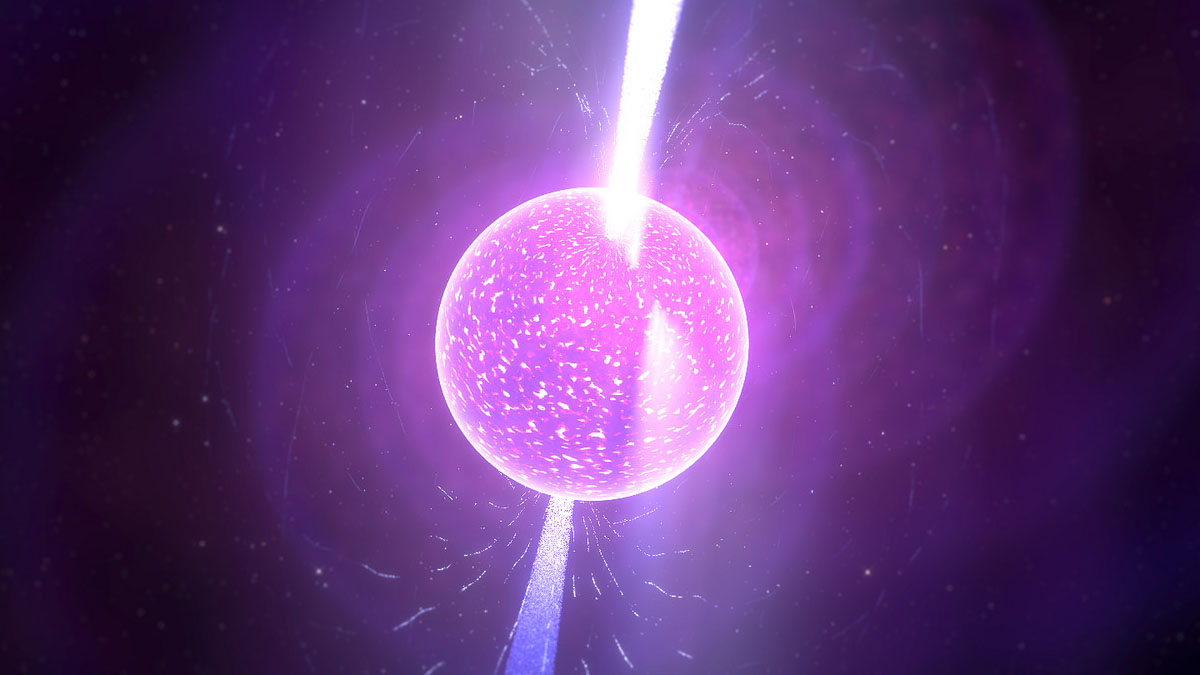black hole interrupted, or rise of the suron

Apologies for the sudden hiatus everyone. In the last several weeks, life has interfered with any possibility of writing and when there has been time for anything, it’s been occupied by Project X which actually does concern this blog and will be detailed in the future. But I’m finally back, and back with an astronomical bang, or FRBs to be exact. You see, recently astronomers have been puzzled by extremely energetic bursts that last for fractions of a second and vanish forever. It’s like a GRB, the birth cry of a newly born black hole, but it all happens in less than the blink of an eye rather than depending on the size of the cataclysm. These bursts are currently called FRBs and no one is really sure what they are, where they generally originate in the night sky, and how much energy they’re really emitting, repeating the original dilemma with GRBs when they were first discovered. Now we have our first theoretical contender called SURONs, or Supramassive Rotating Neutron Stars, the end result of supernovae that should have created black holes but didn’t, not yet at least. They’re essentially ticking black hole time bombs floating in space.
When our sun will die, it will slowly pulsate and cool into a white dwarf because its mass is below the Chandrashekhar limit, the point at which a star becomes too heavy not to collapse on itself as a supernova. There are some objects that challenge exactly where this limit comes into play, but it seems to be about 1.44 solar masses. Stars heavier than that produce iron in their cores during the last stages of their lives and the unique thing about iron is that fusing it produces no net energy output. Bascially, the strong nuclear force’s interactions with iron’s nucleons create a point of diminishing returns on the nuclear binding energy and the tightly wound nuclei of iron is the first element from which a nuclear reaction can’t extract anything worthwhile. No matter how much iron is being fused, there’s just not enough energy to keep its outer layers from collapsing inward and detonating as a supernova. This is when another important astronomical limit comes into play, the Tolman-Oppenheimer-Volkoff limit. (Yes, that Oppenheimer.) If a neutron star left after a supernova is about two solar masses, it will collapse on itself as a black hole.
Although “will” is kind of a strong word really, a better one would be “should.” And this is exactly where the SURONs come into play. Neutron stars are made of degenerate matter, or particles in such a high density environment that the only thing keeping them from falling into each other is, well, each other. Compressing them any more shatters matter as we know it and creates chaotic maelstroms of energy that flow into each other. Degenerate matter at the core of neutron stars can be so hot and dense that it’s basically a weird quantum fluid with no viscosity already, so it’s not going to take all that much to turn it into a black hole. In fact, SURONs are just over the limit and the pressure of its outer layers should’ve triggered a collapse but the particles in their cores were given a brief reprieve. Stars spin and whatever momentum is left after their fiery death has to transfer to the pulsar left behind. Because the star was well over a million miles across and a typical pulsar is tens of miles across, that energy sends the little pulsar spinning wildly arouns its axis, sometimes as fast as 1,122 times per second. This releaves just enough pressure to keep the core from imploding and leave the SURON a neutron star spinning wildly through space.
But there’s a catch. SURONs have extremely strong magnetic fields and those fields will interact with the nebula left behind as will the interactions between its radioactive death beams and gas and dust. Over thousands of years, this will all put a brake on how quickly the neutron star spins which means that at a certain point, the pressure on its core will start building back up until the inevitable happens and the degenerate matter swallows itself and becomes a black hole. Since the SURONs is relatively puny, this collapse happens in a fraction of a second. Its fearsome and powerful magnetic fields will be severed from the just formed event horizon and re-connect very, very violently just outside of it, generating a potent and very short radio pulse. An FRB. This is a nice and tidy explanation because SURONs would be roughly the same size and the event will be pretty much uniform, almost like a Type Ia supernova used as a standard unit for measuring the rate of the universe’s expansion. We don’t know if these neutron stars ticking away into new black holes really do dot the sky and this is not the only possible explanation of FRBs, but it is a pretty good one and it seems quite solid. And that’s often as good as it gets in astronomy…
See: Falcke, H., Rezzolla, L. (2013). Fast radio bursts: the last sign of supramassive neutron stars. Astronomy & Astrophysics arXiv: 1307.1409v1





